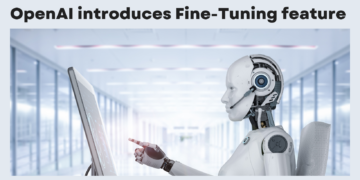The creativity of Generative AI and its future as explained by Forrester
Generative AI, like ChatGPT, is an exciting new technology that has the potential to revolutionize the way humans think about creativity. Unlike the traditional AI systems of the past, Generative AI systems can generate new ideas, concepts, and products from existing data. This AI can perform various tasks, from predictive analytics to Natural Language Processing.
The potential of this technology to aid human creativity is immense. ChatGPT, a Generative AI, is a deep learning algorithm trained on large amounts of data and can generate creative ideas and content. It can develop new stories, songs, art, and even video games.
The idea of using AI to create new ideas is not new. In the 1960s, computer scientist John McCarthy proposed a “General Problem Solver” (GPS) system. GPS was a type of AI that could generate creative solutions to a given problem. The concept laid the foundation for future developments in AI.
Today, the advancements in Generative AI technology have made it possible to create sophisticated, original works of art, stories, and products without relying on human effort. This means that the potential for creativity is now unlimited. AI systems can learn from the data they are fed and create new ideas and content that would otherwise be difficult to develop.
Jay Pattisall, VP and Principal Analyst at Forrester, explains how Generative AI can enhance and not make human creativity redundant. The conversation focuses on the future of technology and the role of the human workforce in sustaining it.
Is Generative AI ready for widespread usage?
Indeed, marketing or agency leaders thinking about giving creative reins to bots should understand that the creativity of the future will entail a combination of platforms and people who will use the inventiveness of artists in conjunction with the precision of technology. Since Forrester introduced the idea of intelligent creativity, the media and content industries have made tremendous strides in the acceptance, creation, and monetization of marketing services supported by technological tools and platforms that use Machine Learning and automated processes. However, the company’s view of AI is that it is not yet prepared or capable of creating innovation on its own.
Can Generative AI work on its own?
Generative AI is currently inaccurate. By creating content that was either intentionally false or wrong by accident, Forrester described the outputs of DALLE 2 and ChatGPT as cohesive nonsense. Increased degrees of fact-checking, proofreading and editing are now necessary. Yes, the program can quickly produce large amounts of text, graphics, or audio. However, marketing and firm executives need to thoroughly examine and assess each piece of content created by AI for its suitability, quality, and accuracy. Given this requirement for monitoring, Generative AI can only support its human partners, who still need to use their judgment to decide whether ideas deserve further exploration.
What kind of training does Generative AI need?
Software like DALLE 2 and ChatGPT can produce text, graphics, and audio using Machine Learning and Natural Language Processing. But for the software to generate deliverables, it has to be provided text-based commands, access to primary sources, and its algorithms continually educated. AI cannot “produce” the intended outcome without these human-generated inputs. In other words, this significantly impacts businesses looking to offer AI-powered services. Agencies will be designing algorithms in the future of creativity. The caliber of the content, data, and engineering provided by the agency staff members in charge of developing, engineering, and optimizing marketing for customers will define the quality and efficacy of each agency’s solution.
How can Automation empower creativity?
Smaller, smarter firms that integrate services and technology to increase effectiveness and impact on their customers are the agencies of the future. Today’s human creative team develops into tomorrow’s human Plus innovative machine team. This will change the way marketing is created. Accepting that AI won’t kill creativity but save it is the first step toward embracing intelligent creation.



























